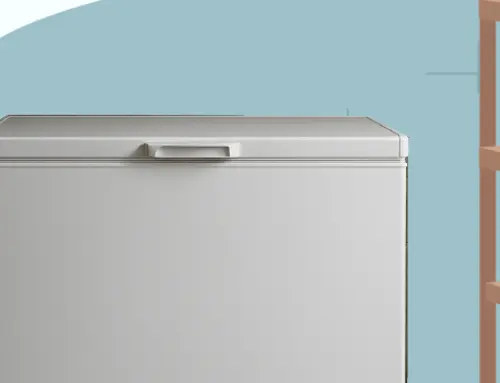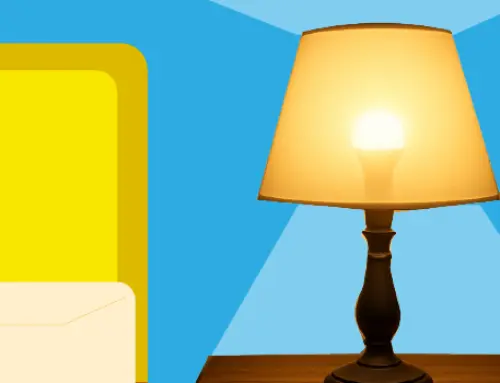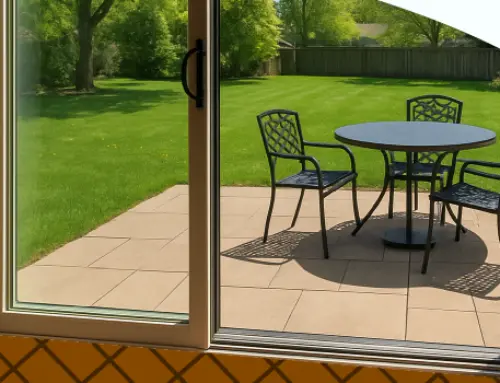Brownout vs. Blackout: What They Mean for You & Your Energy Bill
by Tyler Castle
17.7 min read
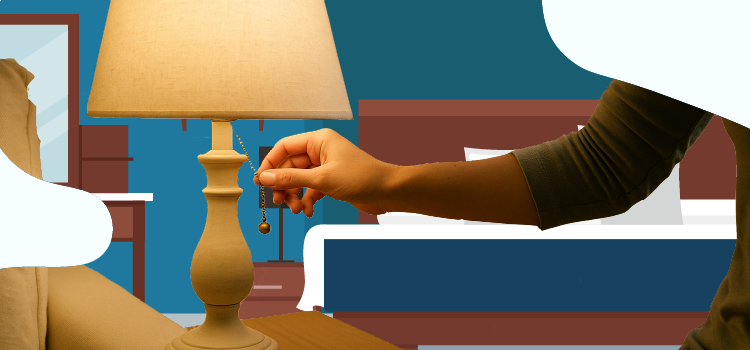
As an energy supplier serving customers across the Midwest and Northeast, we understand firsthand how vulnerable the power grid can be during extreme weather. In states like Illinois, Pennsylvania, and Ohio, aging infrastructure and rising electricity demand are a tough combination on the grid.
That's when power disruptions like brownouts and blackouts start to happen. These events are becoming more frequent as extreme weather intensifies, according to the U.S. Department of Energy.
As a trusted resource in your energy journey, we're here to explain what blackouts vs. brownouts really mean, how they can impact your energy bill and home safety, and what you can do to prepare. Keep reading for simple, expert-backed tips you can rely on.
Key Points of This Article:
- Brownouts are drops in voltage that cause dimming lights or sluggish appliances but don't cut power completely.
- Blackouts are full power outages where all electricity stops and lights, HVAC, internet, and appliances shut off.
- Brownouts are often intentional by utilities to prevent grid failure, especially during heatwaves and peak demand periods.
- Blackouts are more severe and can last from minutes to days, depending on the cause, often triggered by weather or equipment failure.
- Weather is the #1 cause of blackouts.
Brownout vs Blackout: What's the Difference
When your lights flicker or suddenly go out, it's natural to wonder, what just happened? Was it a brownout or a blackout?
While they both involve electricity, they occur and look very different. Knowing the difference between the two can help you protect your home, take the right steps, and avoid damage to your appliances or electronics. Here's what you need to know:
What is a Brownout?
A brownout is a temporary drop in voltage, where power stays on but is weaker than normal.
You may notice lights dimming or flickering, and appliances may slow down or make buzzing noises. Brownouts are usually caused by grid overload during heatwaves or when utilities reduce voltage to prevent a larger blackout.
Brownouts don't last as long as blackouts, typically lasting only a few minutes to an hour depending on your situation.
But it is important not to take brownouts lightly, as they can still cause damage to your appliances because low voltage may harm sensitive electronics like refrigerators or computers.
Sometimes brownouts can happen without warning but if you know one is coming, we recommend unplugging sensitive items before or during a brownout and to avoid using heavy appliances like ovens until voltage levels return to normal.
What Causes Brownouts?
Brownouts happen when the electrical grid can't supply enough voltage to meet demand.
This can be either an intentional move by utilities to avoid a full-scale blackout or an unintentional drop caused by grid strain. They're more common during extreme weather conditions when electricity usage spikes, especially in the summer.
Here are some of the most common causes of brownouts:
- High electricity demand –When many households run air conditioners at full blast, sometimes your electricity grid might not be able to keep up. This is especially during heatwaves.
- Grid congestion – Brownouts can happen when too many users are pulling power from the grid in a concentrated area or time frame.
- Preventive utility action – If a blackout is on the horizon, utilities may lower voltage intentionally to stabilize the grid as a preventive measure to avoid a full-on blackout.
- Aging infrastructure – Outdated power lines, transformers, and substations may not be equipped to handle modern energy loads which can result in a brownout.
- Extreme weather events – Thunderstorms, heatwaves, and even high winds can interfere with electricity transmission potentially causing a brownout.
- Equipment failure – A failure in a substation, transformer, or power generation site can trigger a localized brownout.
Warning Signs of a Brownout
Brownouts can sometimes be hard to identify at first, but there are subtle signs to watch for. These include:
- Flickering or dimming lights
- Sluggish or malfunctioning appliances
- Internet routers or devices restarting unexpectedly
- Reduced performance of electronics like air conditioners or refrigerators
- Unusual buzzing or humming from plugged-in devices
Brownouts are often a signal that the grid is overwhelmed. If voltage levels continue to drop or equipment fails, a full blackout could follow.
What is a Blackout?
A blackout is a complete loss of power, meaning everything in your home shuts off and your house (or even your city) goes dark.
Unlike a brownout, which is a dip in voltage, blackouts cut off all power, leaving you without lighting, appliances, HVAC systems, and even internet connectivity.
According to the United States Census Bureau, about 1 in 4 households experience a power outage in the span of a year. So, if you think you're immune to a blackout or power outage, think again, these disruptions are more common than many realize, and being prepared can make all the difference.
Blackouts can last anywhere from a few minutes to several days, depending on the cause and restoration efforts. So, having the right tools, tips and safety measures in place can help you survive the crisis.
What Causes Blackouts?
Blackouts can be caused by several things and sometimes they might happen without you knowing it. Whether it's an isolated outage or a widespread event affecting thousands, the root causes often come down to strain or failure somewhere within the electrical grid.
Blackouts can be triggered by:
- Weather – Severe weather like ice storms, lightning, and high winds.
- Flooding or fallen trees – Water and debris can lead to short circuits, substation failures, or broken power lines.
- Equipment failure – Problems with transformers, substations, or outdated grid components can result in unexpected outages.
- Sudden spikes in electricity demand – During heatwaves or cold snaps, mass usage of air conditioning or heating systems can overload the grid.
- Human error or cyberattacks – While less common, operational mistakes or malicious cyber activity can also cause outages.
According to Climate Central, weather-related blackouts have increased significantly in recent years, particularly in regions with aging infrastructure, like parts of the Midwest and Northeast. As climate change brings more extreme and unpredictable weather, the risk of blackouts is only expected to grow.
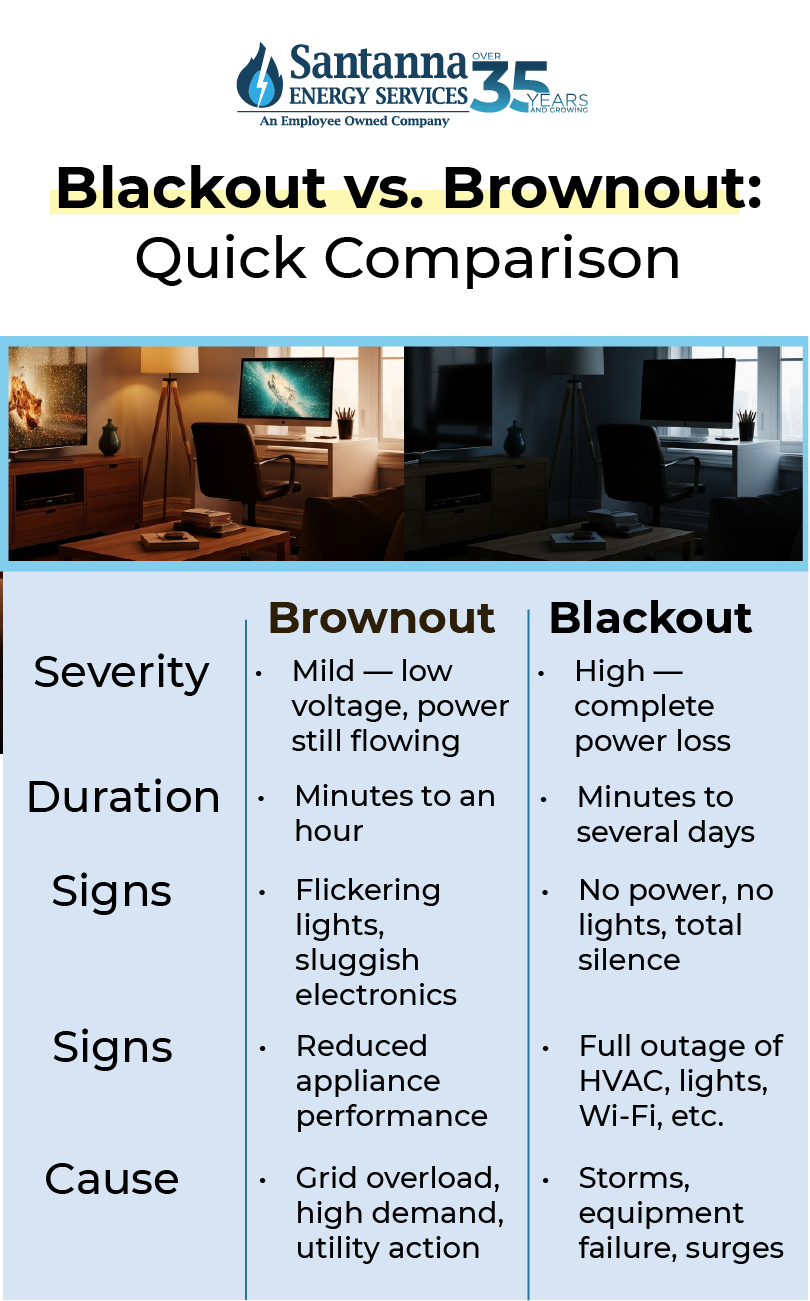
Difference Between Blackout and Brownout: How They Compare
When looking at blackout vs a brownout, while they might sound the same, they have very big differences. Let's look at how they compare in terms of severity, duration, impacts, voltage, geography, and infrastructure:
Severity
When it comes to severity, you'll have to worry more about a blackout than a brownout.
A brownout is merely a warning sign that the electrical grid is struggling but hasn't completely failed. At most, you'll experience some dim lights and slower appliances but for the most part, your electricity will remain flowing.
Blackouts are more serious, they mean the grid has lost control or failed altogether, cutting off all electricity. In this situation, you'll be completely without power so the hazards you could experience are much more dangerous.
Duration
In terms of duration, a blackout can last way longer than a brownout.
Most brownouts last anywhere from a few minutes to an hour, though the exact duration can vary depending on the cause and the condition of the power grid. In some cases, especially during extreme heat or high demand periods, they may happen multiple times in short bursts throughout the day.
In contrast, blackouts can last much longer, from minutes to several hours, or even days after major storms or equipment failures. In 2022 alone, the U.S Energy Information Administration reports U.S. electricity customers averaged five and one-half hours of power interruptions.
Impacts
Brownouts affect how your appliances perform. You may notice lights dimming, fans slowing down, or electronics acting strange. But since you still have some power, life continues—just at reduced capacity.
Blackouts bring everything to a stop; no lights, no HVAC, no Wi-Fi, no cooking. That can be a major safety issue, especially in homes with children, older adults, or people relying on medical devices.
Blackouts have the most severe impact.
Regional or Localized Nature
Brownouts are typically targeted and localized, especially in large metropolitan areas. While often controlled, brownouts can also occur unexpectedly due to severe weather that puts stress on the grid.
Blackouts, on the other hand, vary in scale. A blown transformer might only knock out power on your block, while a major storm could leave entire cities or regions in the dark. According to ClimateCentral.org, between 2000 and 2023, nearly 80% of all major U.S. power outages were caused by extreme weather. Making it the leading driver of widespread blackouts.
Infrastructure and System Failures
Brownouts usually point to temporary grid stress, often from high usage while blackouts often point to deeper system issues like aging equipment, overloaded substations, or storm damage.
Many areas in the Midwest still rely on older grid infrastructure and leave themselves vulnerable to energy loss and brownouts under high temperature conditions or surging demand.

Am I Experiencing a Brownout or Blackout?
When something suddenly changes with your electricity, like your lights flicker or go out entirely, it can be confusing. Knowing whether you're in a brownout or a blackout can help you make fast, safe decisions for your home and electronics. Let us help you decipher which one you're in:
Flickering or Dim Lights? That's Likely a Brownout.
A brownout happens when the voltage drops, but electricity is still flowing. You might notice:
- Lights dimming or flickering
- Ceiling fans spinning slowly
- Electronics like your TV or computer acting sluggish or buzzing
- Your air conditioner sounding strained or running inconsistently
If any of this is happening to you and your electricity is still flowing, you're likely experiencing a brownout.
Brownouts usually feel like something is "off" or low-powered around your house. This is your sign to reduce usage, unplug sensitive devices, and avoid turning on large appliances. Voltage fluctuations, especially during summer peaks, can shorten the lifespan of appliances if ignored.
Total Loss of Power? That's a Blackout.
A blackout is when the power is completely gone. It's usually very obvious often and happens without warning. Signs include:
- No lights, no power outlets working
- Wi-Fi and cell boosters are off
- Appliances are silent
- Your home is completely dark and quiet unless you have backup power
If you're experiencing any of this, you're likely in a blackout.
Blackouts may be caused by storm damage, grid failures, or blown transformers. In many cases, the outage is widespread and reported on your utility company's website or outage map.
During a blackout, your job is to stay safe, use flashlights instead of candles, and avoid opening the fridge or freezer to keep food cold.
If you're unsure, try a simple test: Flip a light switch. If it dims or flickers, it's likely a brownout. If nothing happens, it's a blackout.
Are There Rolling Brownouts?
Rolling brownouts do happen, and they're becoming more common, especially during extreme heat and periods of high electricity demand. If you've ever had your lights dim or appliances slow down for a short time, then return to normal, you may have experienced one.
What Is a Rolling Brownout?
A rolling brownout is when an electric utility company intentionally reduces voltage to certain areas for a short period, usually in rotation across different neighborhoods or cities.
Unlike a rolling blackout, the power doesn't go out completely. Instead, it's lowered just enough to keep the grid from crashing altogether.
Think of it like a "power diet" for your home, your lights might dim, and your AC may run weaker, but your home still has power. These are usually planned emergency measures used to prevent a total grid failure.
Do Brownouts Damage Electronics?
Brownouts can definitely damage electronics especially if they happen often or last for extended periods. Even though your lights stay on during a brownout, the drop in voltage can put a lot of stress on anything plugged in.
Most electronics and appliances are designed to run at a stable voltage (usually around 110 to 120 volts in the U.S.). When the voltage drops, like it does in a brownout, your devices may overheat, run inefficiently, or fail to start properly
This stress can shorten the lifespan of your devices or cause permanent damage, especially for items like refrigerators and air conditioners (which rely on motors), computers, TVs, and gaming systems (which contain sensitive microchips).
Brownouts can disrupt the performance of motor-driven appliances and electronics by causing excess heat and voltage instability, which may lead to malfunctions or failure.
What Devices Are the Most Vulnerable During Brownouts and Blackouts?
Some household devices are more sensitive to power failures—whether it's a brownout (low voltage) or a blackout (total loss of power). These devices may malfunction, lose data, or even suffer permanent damage if not protected.
Knowing which ones are at risk can help you act fast to unplug them, use surge protection, or invest in backup power to avoid costly repairs or replacements.
- Computers and Laptops: These devices are especially vulnerable to sudden shutdowns and voltage drops. You risk losing unsaved work or corrupting your operating system during a power outage. Brownouts can also damage internal components like the power supply unit (PSU).
- TVs and Home Entertainment Systems: Modern TVs, streaming devices, and sound systems use delicate internal circuitry. Low voltage can cause glitches, audio/video issues, or motherboard damage.
- Refrigerators and Freezers: These appliances have compressor motors, which are highly sensitive to voltage changes. Brownouts can cause them to overheat or fail to restart correctly after power is restored.
- HVAC Systems (Heating and Cooling Units): These systems draw significant power and are expensive to repair. During brownouts, your AC unit may struggle or shut off unexpectedly, which puts strain on its motor.
- Internet Routers and Modems: Power failures cut off your Wi-Fi and sudden power cycling can corrupt firmware or cause connection issues.
- Gaming Consoles: Consoles like Xbox and PlayStation are at risk of data corruption or hardware failure if power outages occur during updates or gameplay.
- Smart Home Devices (Thermostats, Lights, Cameras): Frequent outages or brownouts can disrupt settings, erase customizations, or brick certain smart home hubs.
- Medical Equipment (CPAP machines, oxygen concentrators, monitors): If anyone in your home relies on powered medical devices, a power outage can be more than an inconvenience, it can be life-threatening.
- 9. Battery Chargers (for phones, laptops, electric tools): Plugging chargers in during unstable voltage can overcharge, undercharge, or even damage the battery.
Can Brownouts Cause Higher Energy Bills?
Brownouts can contribute to higher energy bills because your appliances often run less efficiently when voltage drops, even though the power never fully goes out.
That reduced voltage causes your appliances and electronics to work harder and less efficiently. For example, your air conditioner may run longer, your refrigerator might struggle to maintain temperature, and your electronics may overheat or underperform.
All of this leads to increased energy use, even though you're technically using the same appliances.
After the brownout, when normal voltage is restored, many appliances restart or run at full power to recover, especially systems like HVAC, water heaters, and refrigerators. This period of "catch-up energy use" can create a short-term spike in electricity consumption, which can raise your energy bill, particularly if you're on a variable-rate plan where prices fluctuate with demand.
Can Blackouts Cause Higher Energy Bills?
Blackouts can indirectly lead to higher energy bills, not because you're charged while the power is out, but because of what happens before and especially after the outage.
Once power is restored, most homes experience a surge in usage as appliances like air conditioners, refrigerators, water heaters, and electronics all turn back on at once. This strong surge has the potential to increase your energy bill with all the power that's being produced.
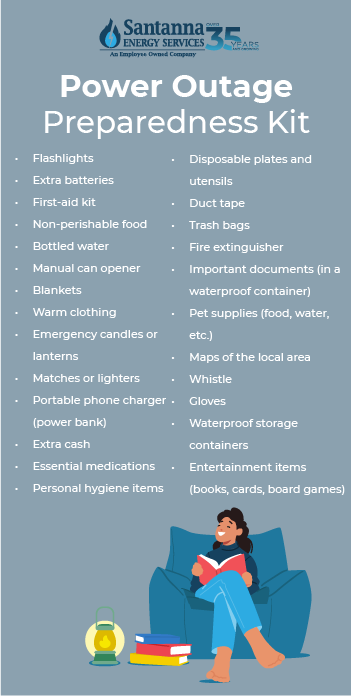
How to Prepare for Brownouts and Blackouts
Brownouts and blackouts can happen unexpectedly. While utilities work hard to keep the grid running, there are steps you can take right now to protect your home, family, and electronics for later when a potential brownout or blackout hits you.
Here are some smart, research-backed ways to prepare:
1. Build a Power-Outage Emergency Kit
Create a kit with flashlights, extra batteries, bottled water, non-perishable food, first-aid supplies, a manual can opener, and a battery-powered or hand-crank radio. According to FEMA, having these items ready helps you stay safe, calm, and informed during an extended outage.
2. Use Surge Protectors
Install surge protectors on sensitive electronics like TVs, computers, and gaming systems. During a brownout or when power returns after a blackout, sudden voltage spikes can fry circuits. We recommend surge protection to prevent costly damage and extend the life of your appliances.
3. Charge Power Banks and Battery Packs in Advance
Keep portable chargers fully charged so you can power your phone, flashlight, or small medical devices. This is especially helpful during blackouts when you may lose internet, phone access, or access to smart-home systems.
4. Invest in a Generator or Solar Battery Storage
A standby generator or portable solar battery can keep essential devices running, like your refrigerator, medical equipment, or phone chargers. If you live in areas prone to outages, like Ohio or Pennsylvania during winter storms, this is a key long-term investment. Make sure your system is properly sized and installed by a licensed technician.
5. Know How to Manually Operate Your Garage Door
Most garage doors rely on electricity. If power is out, you may not be able to get your car out unless you know how to release the manual lever. Practice this ahead of time so you're not stuck during an emergency.
6. Unplug Major Appliances During a Brownout
If lights start to dim or flicker, unplug your refrigerator, air conditioner, washer/dryer, and electronics. Brownouts can cause motors to overheat or fail. When your power comes back on during a blackout, the surge of power could affect your device. Wait to plug them back in until power fully returns and voltage stabilizes.
7. Keep the Refrigerator and Freezer Closed
During a blackout, an unopened fridge will keep food cold for about 4 hours; a full freezer will hold temperature for about 48 hours. The Centers for Disease Control and Prevention (CDC), recommends using appliance thermometers and discarding food above 40°F for more than 2 hours to avoid illness.
8. Sign Up for Utility Outage Alerts
Many utilities offer text or email alerts when an outage occurs in your area. We recommend you sign up for them to also keep informed. This helps you track updates, estimated restoration times, and safety instructions.
9. Talk With Household Members About an Emergency Plan
Make sure everyone in your home knows what to do during an outage. Designate a meetup spot, store emergency contacts, and talk through who's responsible for what. It's especially important for households with young kids, older adults, or people who rely on powered medical equipment.
FAQ's
During brownouts & blackouts, who do I call, my energy supplier or utility?
During brownouts and blackouts, contact your local utility, not your energy supplier. Your utility company maintains the power lines and handles outage repairs. Your energy supplier (like Santanna) manages your rate plan but doesn't control power delivery. Check your utility's website or bill for their outage hotline.
Do utilities usually plan brownouts?
Yes, utilities sometimes plan brownouts—but only as a last resort to prevent a widespread blackout. These are known as controlled or rolling brownouts, and they typically occur during extreme demand events, like intense summer heatwaves or major grid emergencies.
How can a generator help in blackout or brownout situations?
A generator can be a lifesaver during power disruptions. In a blackout, it provides backup electricity to keep essentials running, like your fridge, heat or AC, Wi-Fi, phone chargers, and even medical devices. In a brownout, where voltage drops but power isn't fully lost, a generator can protect sensitive appliances from damage by delivering stable power.
Is the power grid in the Midwest more at risk than in other regions?
The Midwest grid is considered at elevated risk, especially during extreme weather. According to the North American Electric Reliability Corporation (NERC), the Midwest has a higher likelihood of energy shortfalls during peak summer and winter conditions due to limited reserve capacity, aging infrastructure, and increasing demand.
Why is my internet slow during flickering?
During a brownout or flickering event, voltage drops can affect your Wi-Fi router and modem's power supply, causing them to reset, lag, or disconnect temporarily. Even slight interruptions can break the connection with your ISP or corrupt your router's signal processing, leading to slow or unstable internet performance.
Power disruptions like brownouts and blackouts can be stressful—but understanding the difference, knowing how to prepare, and taking small steps to protect your home can make a big impact. From unplugging sensitive electronics during flickers to investing in surge protection or backup power, you have more control than you might think.
And when it comes to your energy plan, having one that offers stability and support—no matter what the grid is doing—can give you true peace of mind. Explore our Santanna Energy Plans designed to keep you prepared, protected, and in control year-round.
Tyler is an experienced energy professional, having worked for Santanna Energy Services, for the past four years. He is passionate about renewable energy and believes that diversifying the energy grid is the key to a sustainable future. Tyler is dedicated to supplying consumers with the best possible energy solutions and works diligently to make sure that Santanna can deliver the highest quality service.



